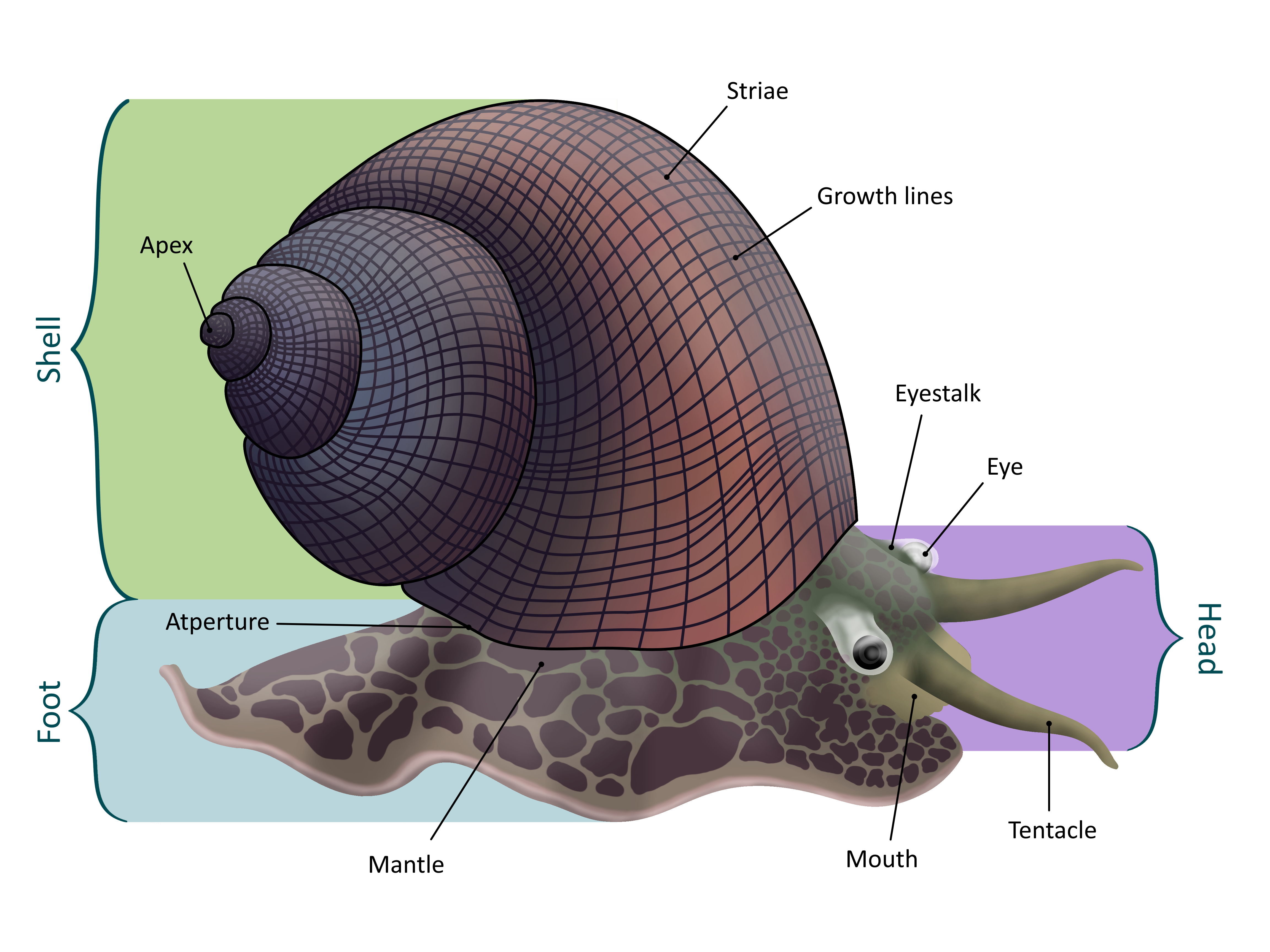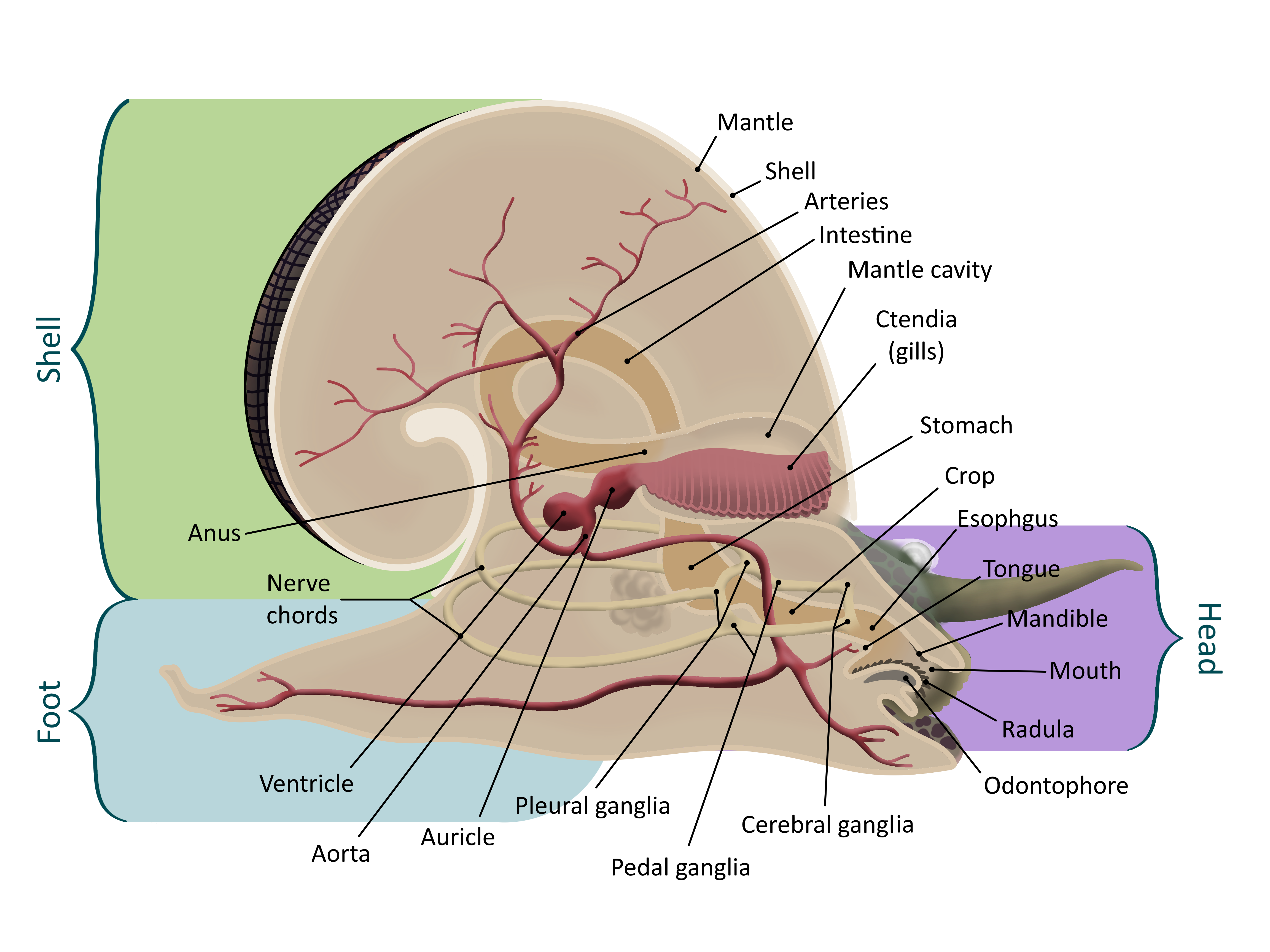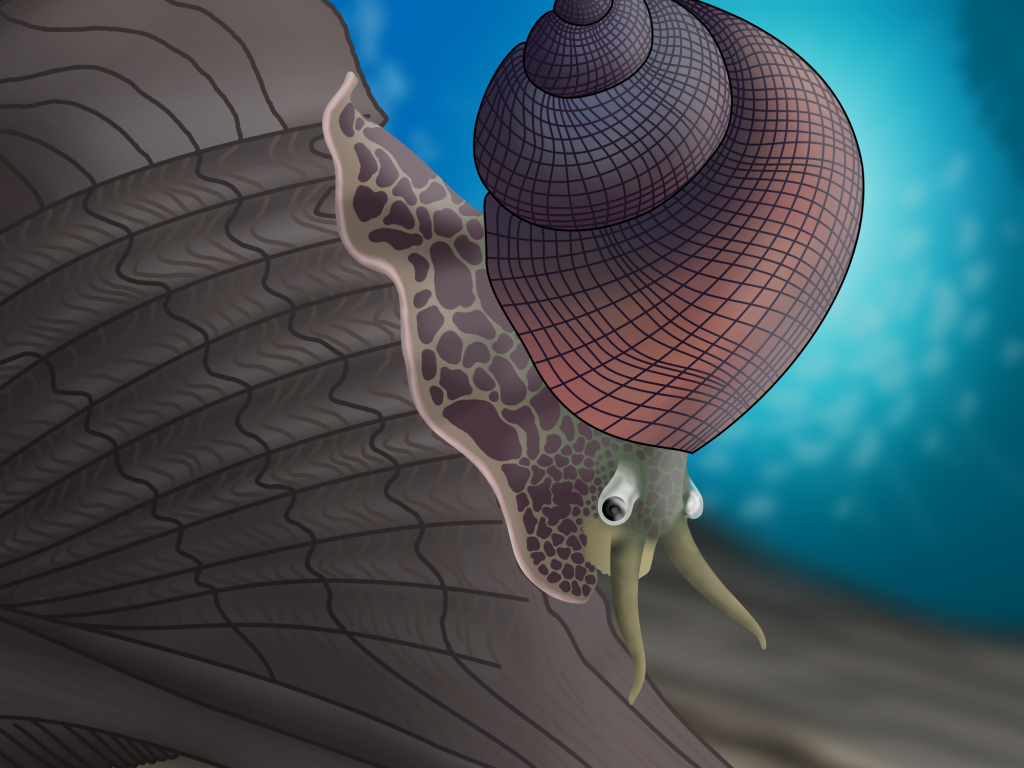
Like most mollusks, gastropods have a toothed tongue-like organ called the radula for food processing. Gastropods are the most successful mollusks today, with over 40,000 species. They inhabit saltwater, freshwater, and many biomes on land, and are usually characterized by a large muscular foot and an offset-spiraling shell (2).
Gastropods found at Seven Stars
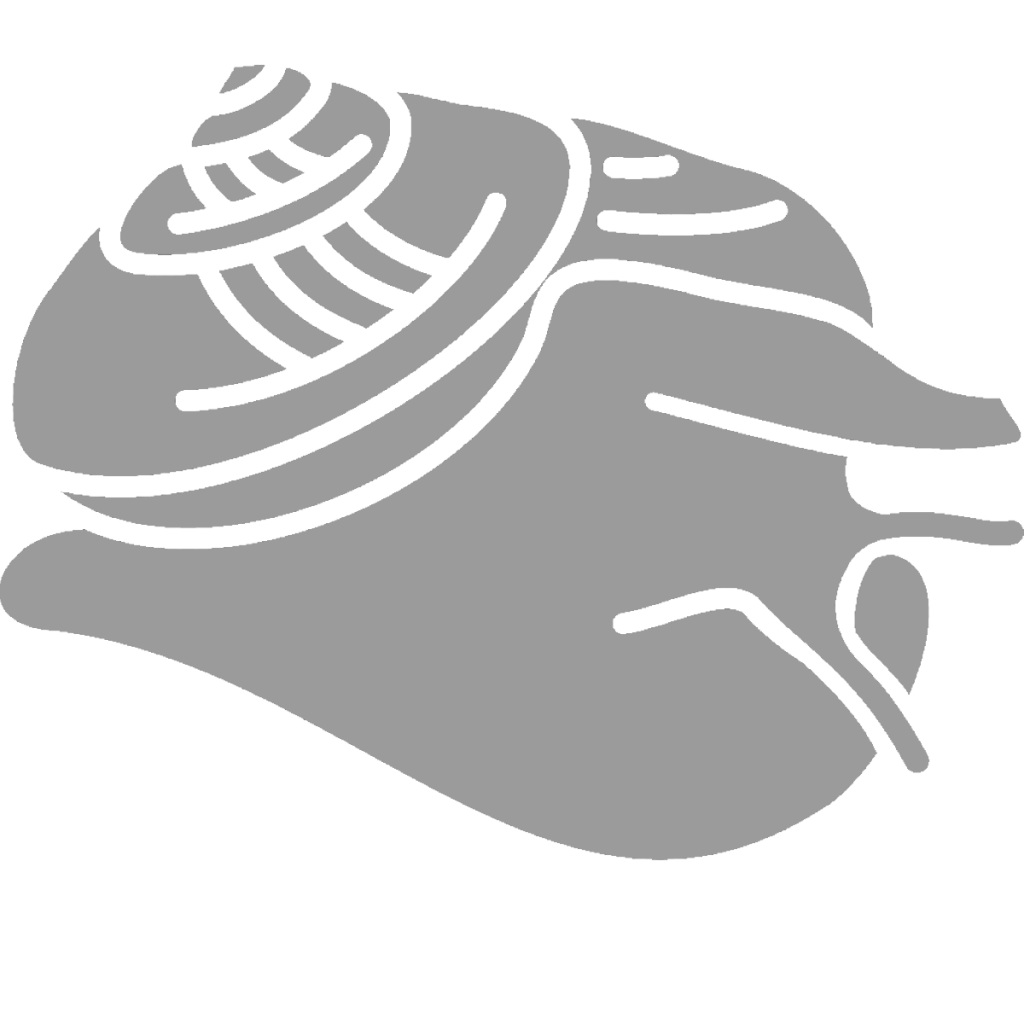
Bembexia sp.
VERY RARE
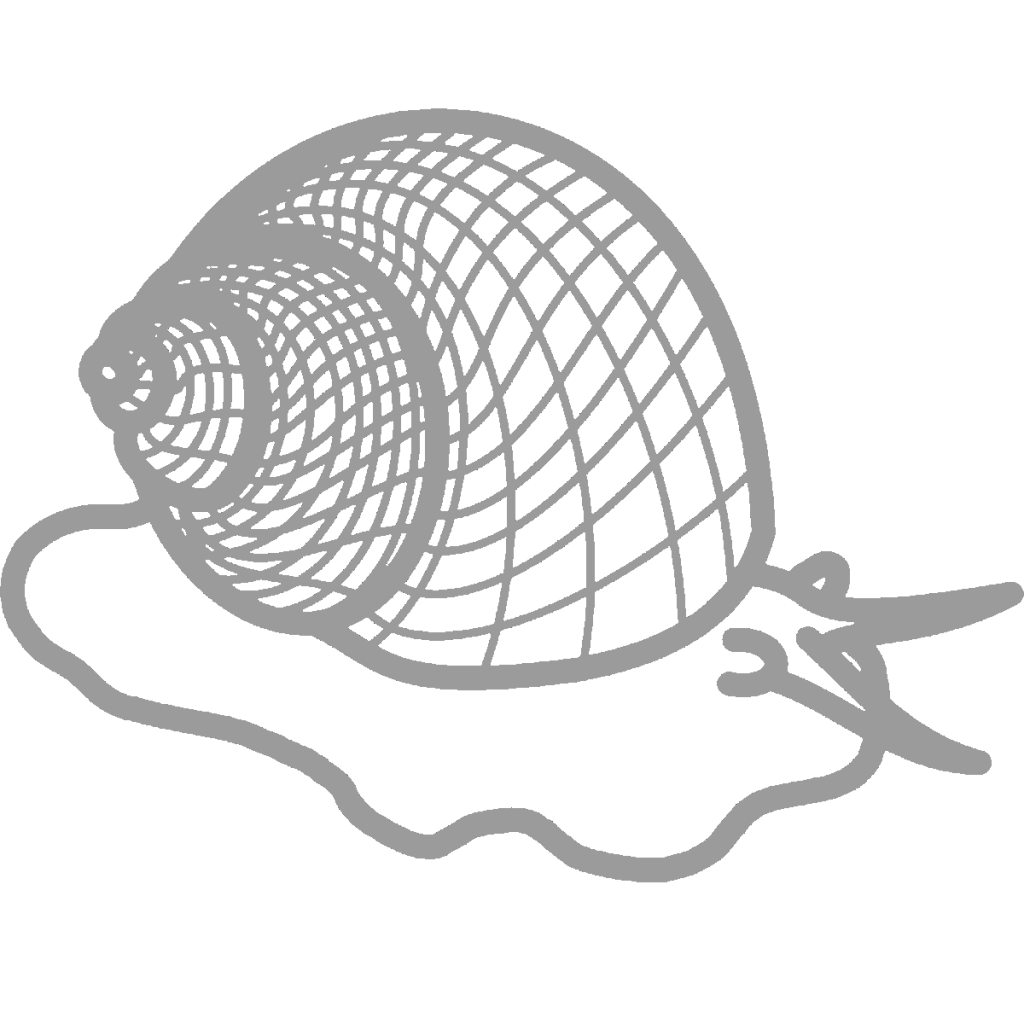
Cyclonema sp.
COMMON
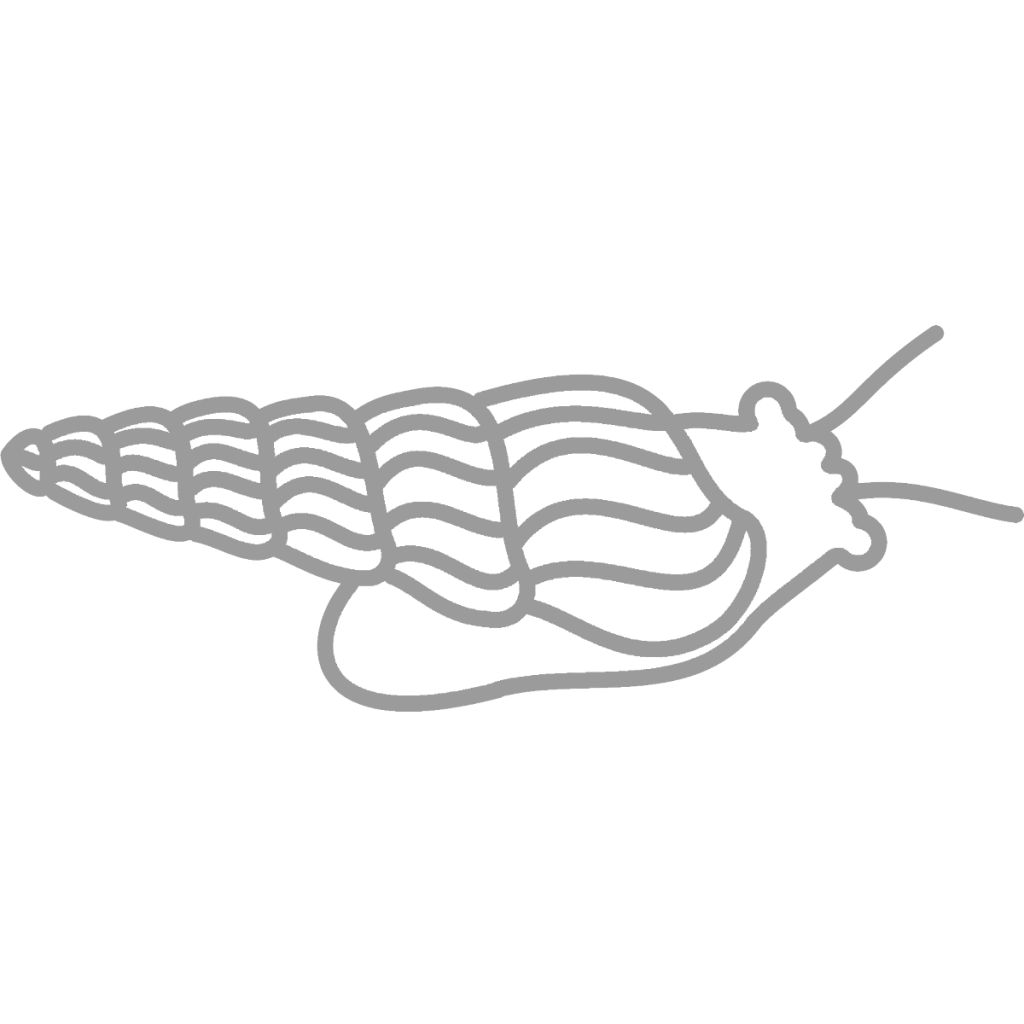
Paleozygopleura hamiltoniae
RARE
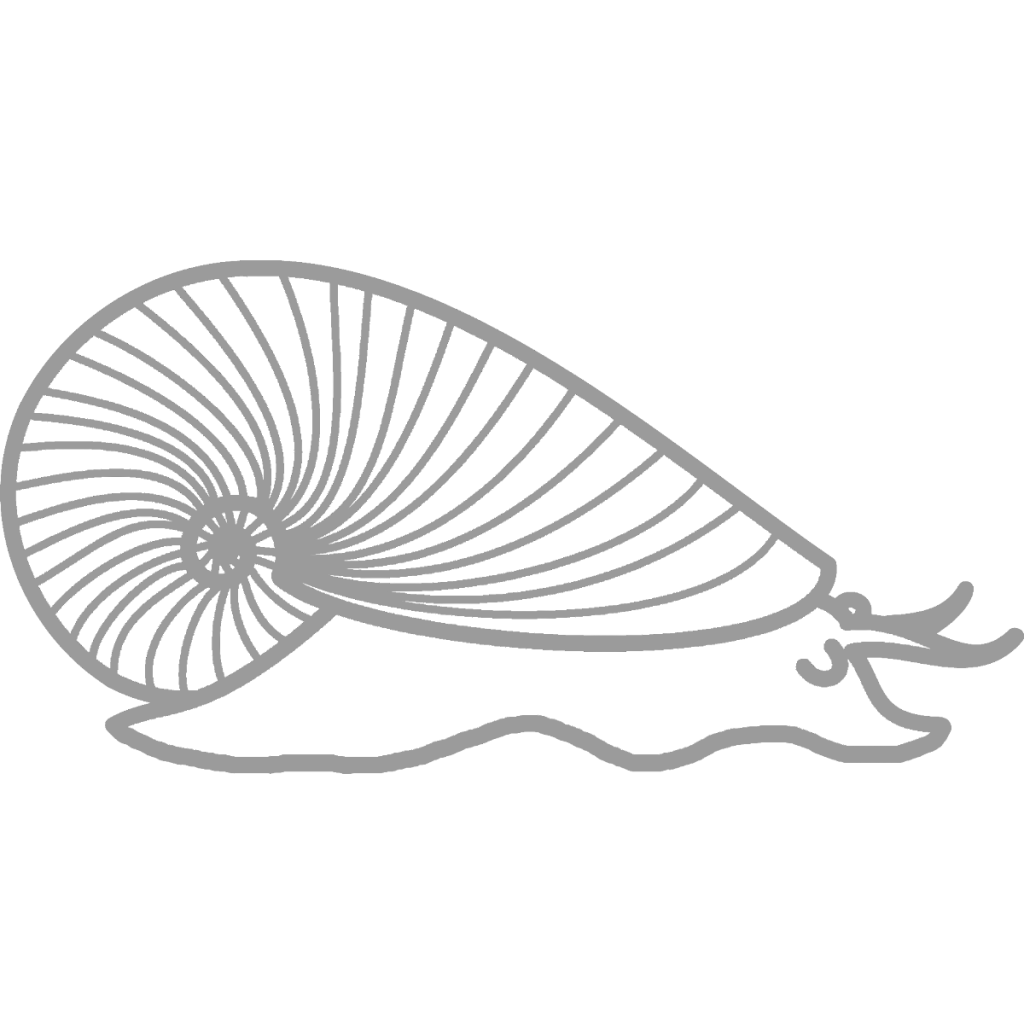
Ptomatis patulus
COMMON
How do I identify Gastropods?
Gastropods do not coil on one plane as Cephalopods do; instead they coil offset to form a spire as the gastropod grows (1, 2). In this way they can be differentiated from ammonoid cephalopods; see below. At Seven Stars, gastropod fossils can be found as imprints of the shell’s texture, a body fossil with the texture, or an internal mold formed when mud got into the shell and turned to rock, resulting in a cast of the inside of the shell.
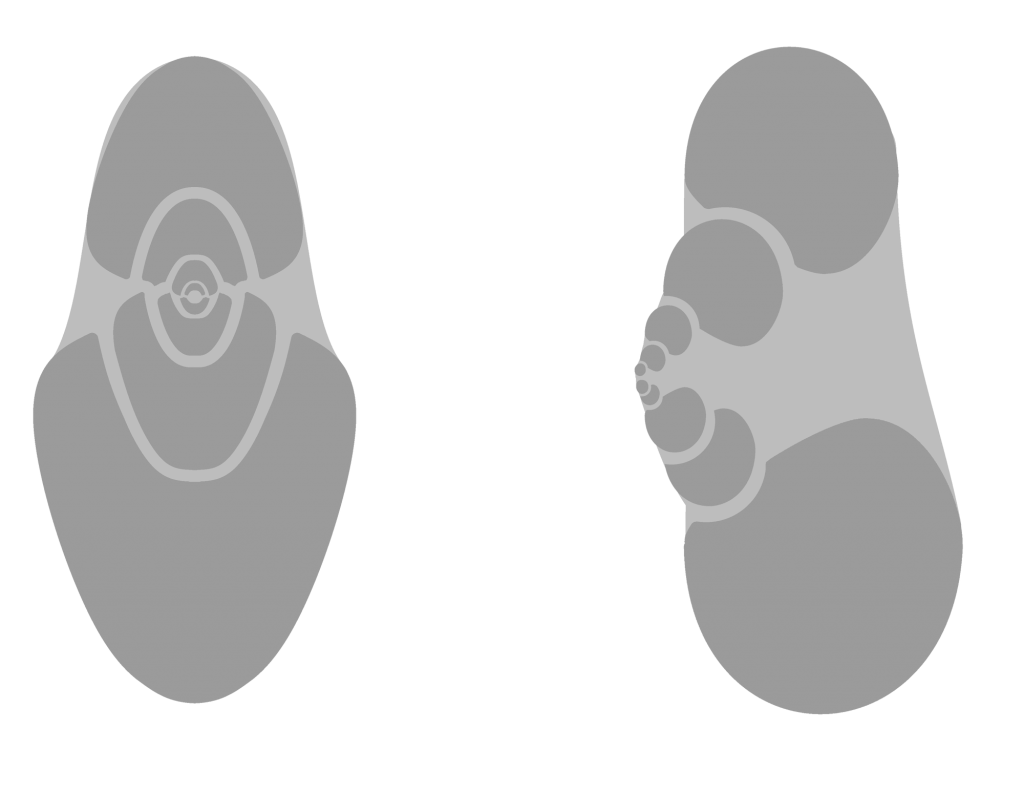
Gastropod coiling (right).
What were Gastropods?
Gastropods, as stated above, grew spiral shells for protection. These varied considerably from species to species (1, 2). Inside was the living animal. Gastropods have a small head with tentacles, stalked eyes, and a mouth housing a radula. This tongue-like, toothed organ is shared by most mollusks, excluding Bivalvia. The radula was situated on top of the odontophore, anchoring muscles that pulled it backwards and forwards; this allowed gastropods to scrape off or shred possible food items. Behind the head was a large, muscular foot. Waves of muscle contraction allowed gastropods to glide on surfaces (2). This allows gastropods to be very mobile (1). The mantle, a dorsal tissue shared by all mollusks, helped the gastropod move and also grew the protective shell. Gastropods breathed through gills found in the mantle cavity, where the digestive system also ended (2).
Strangely, as gastropods grew, their shells and main internal organs rotated 180° (2, 3). This would be done by first contracting asymmetrical muscles found on only one side of the body; these were wound around the gastropod and rotated the shell and internal organs 90°. The other 90° were achieved by slowed growth on one side of the body and accelerated growth on the other; this caused the body to loop around an axis. This could in theory cause problems as the anus empties waste right next to the gills and head; different gastropods have holes or slits in the shell for waste to exit. However, even when these holes are blocked, gastropods seem to avoid poisoning. Often water flow prevents this problem entirely as water flows from the left through the gills first and then comes in contact with the anus on the right before exiting the mantle cavity (3).
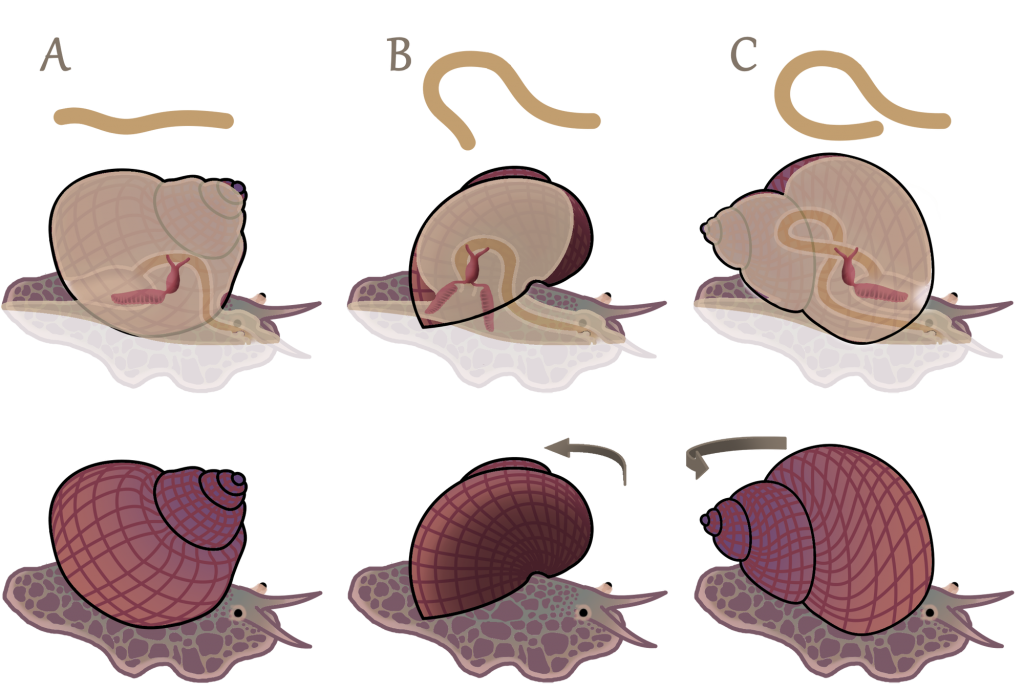
(A) Before torsion, the shell spirals forwards while major mantle cavity-bound organs face backwards.
(B) Cyclonema after the first stage of torsion, the shell spiraling to the left while the digestive and respiratory systems face to the right.
(C) After the second stage of torsion the shell spirals backward while the mantle cavity faces forward, positioned over the head; the digestive track forms a loop.
The top row shows the digestive system from the top, the second inside the gastropod from the side, and the third shows external life reconstructions.
Interestingly, gastropods have what is called an open circulatory system. This means that while the blood is pumped out from the heart through arteries, it is not simply pulled back into the heart through veins; instead it is collected in small cavities in the foot and is driven back through the beating of cilia. This is unlike Cephalopoda, for though they also have an open circulatory system, they use muscles to pump blood back to the heart (5).
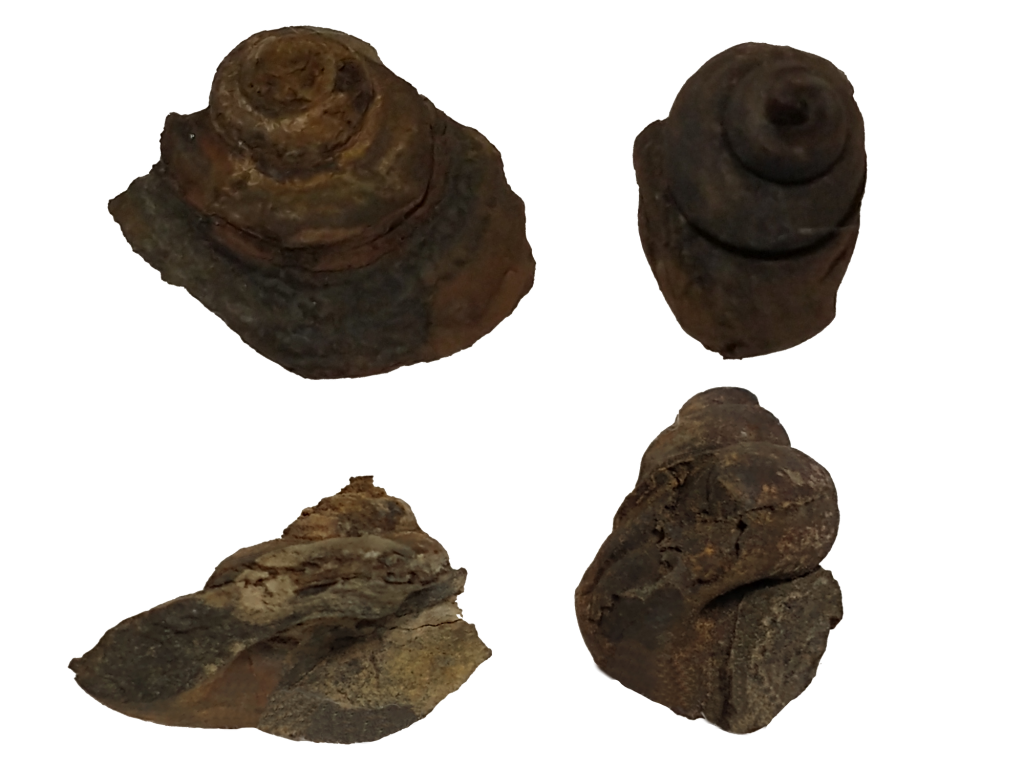
A Note on Bellerophont Relations
For over half a century, paleontologists have argued about the taxonomic placement of the Bellerophontida, a group of planispiral (coiling on one plane instead of offset, opposite of normal gastropod coiling as seen in Bembexia and Cyclonema in Figure 4) mollusks. Some also had muscle scars that appeared to have anchored muscles that do not appear to have gone through torsion, like the Monoplacophorans, though the issue becomes more complex upon closer inspection. Most Bellerophonts are now, however, considered to be gastropods, some primitive and others more derived, being not one group but two that had similar traits. A more thorough description of the issue can be found in the post Monoplacophora, as well as a works cited with resources regarding this topic.
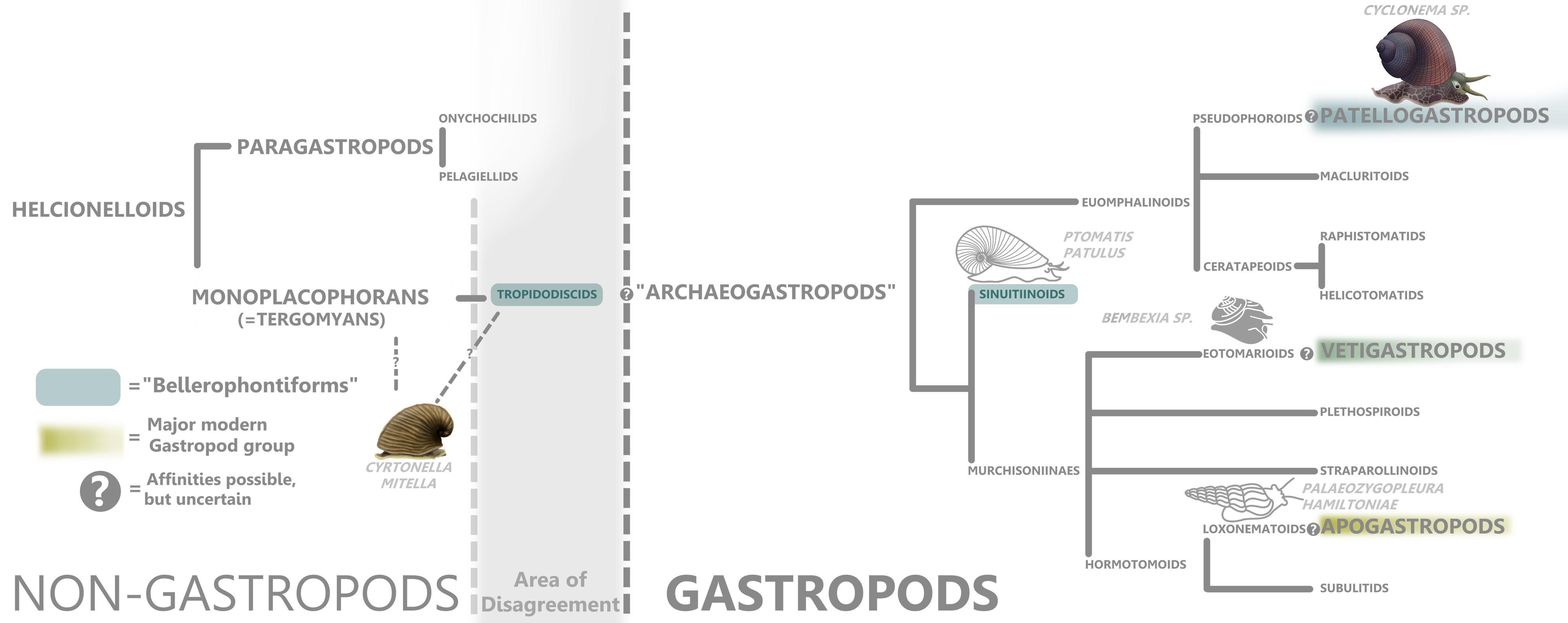
Gastropods at Seven Stars
Some gastropods can be very common at Seven stars. They were obviously an important part of the ecosystem, grazing on detritus and possibly being an important prey item. There are five species that can be found at Seven Stars.
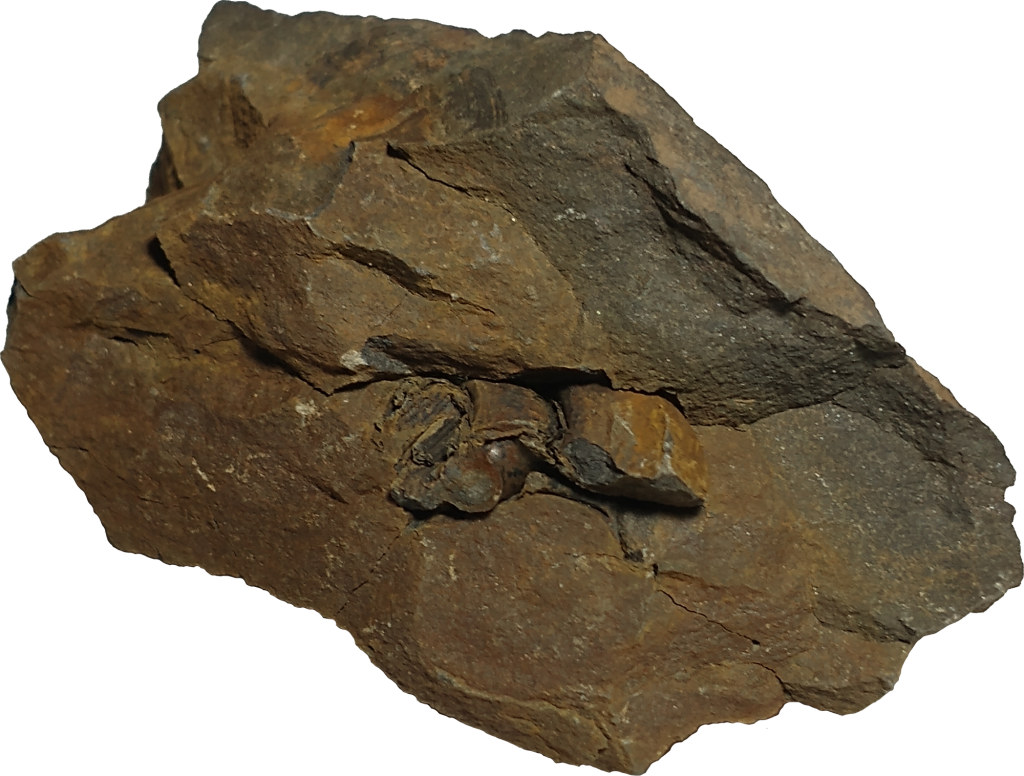
Bembexia sp.
Bembexia is similar to Cyclonema and can most easily be differentiated by its less circular cross section and growth lines. Bembexia has a ridge on the outer edge of the shell, smooth underneath and with growth lines dorsally, with a low spire.
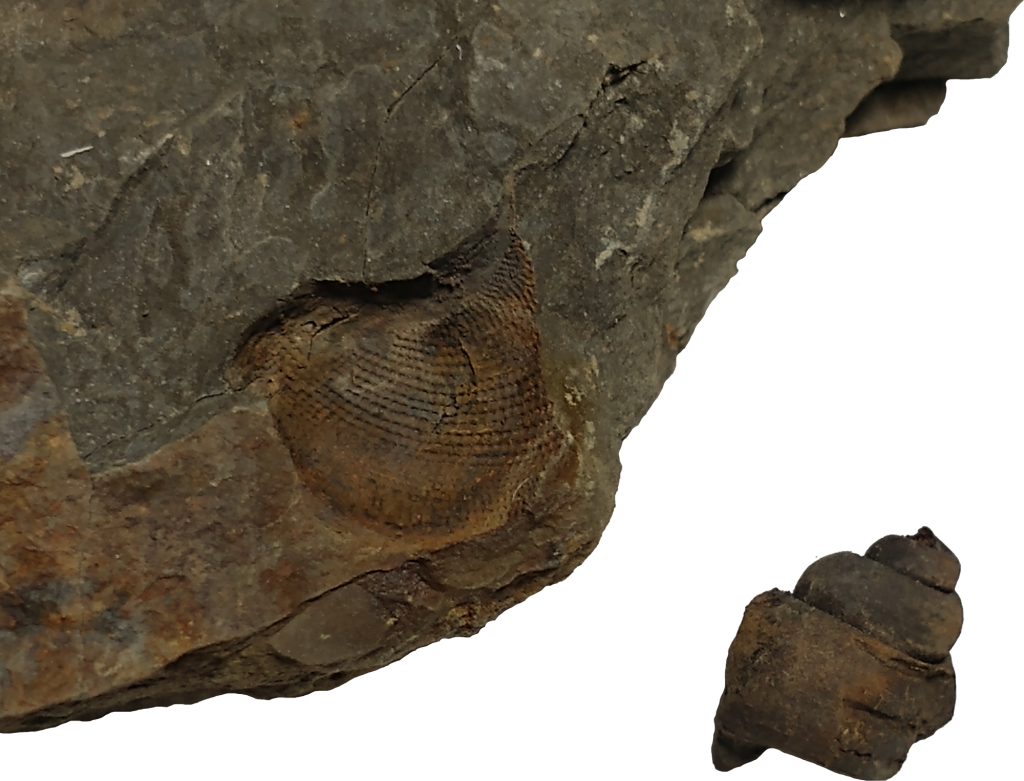
Cyclonema sp.
Cyclonema has a higher spire than Bembexia. It has growth lines covering the entire shell with striae following the direction of growth, intersecting growth lines that radiate from the apex. This characteristic texture is easily recognizable. With a more circular cross section, Cyclonema can be differentiated from the more flattened Bembexia.

Paleozygopleura hamiltoniae
Paleozygopleura has a very high spire and radiating growth lines that render it unmistakable. Often very small, smooth internal molds are the most common finds at Seven Stars. Since modern gastropods with such long shells can pull themselves very far in for safety, Paleozygopleura probably did, too.
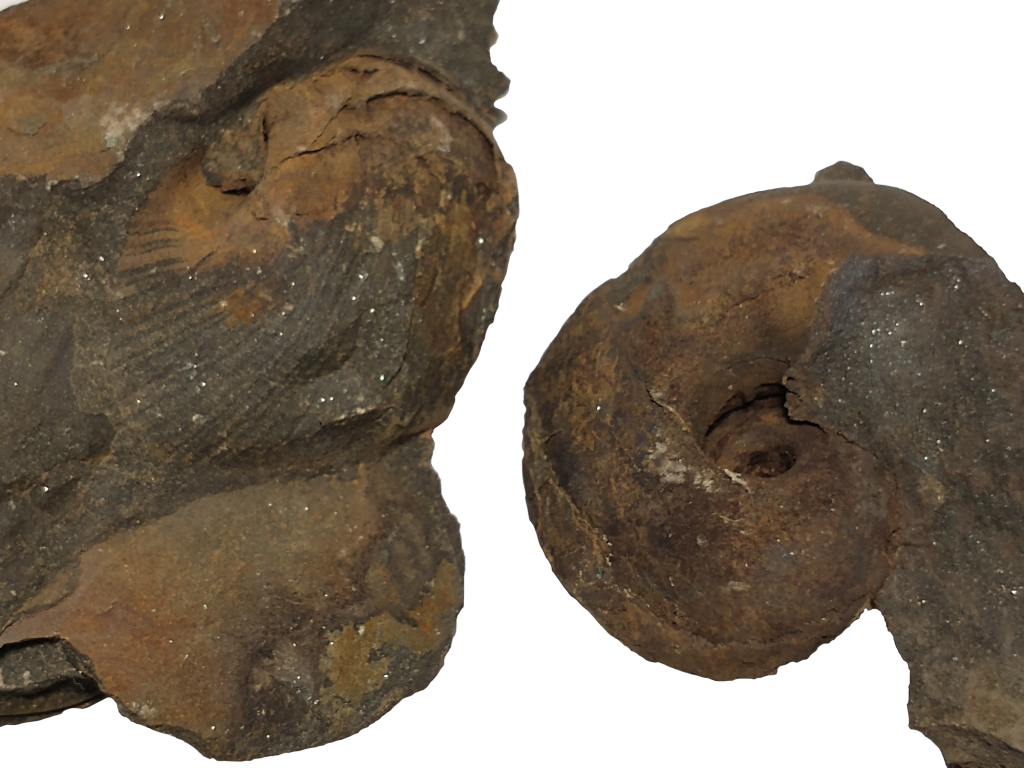
Ptomatis patulus
Ptomatis is the largest gastropod at Seven Stars and its fossils are very easily differentiated from the other genera. Ptomatis’ growth lines form a similar texture to that of Cyclonema, but the longitudinal striae are more pronounced and the growth lines form a large, swooping “V” on the dorsal surface. Note that Ptomatis enveloped its previous whorls similar to ammonoids; looking at the above diagram comparing the two shows that in Ptomatis the coiling is slightly offset. This gastropod is different from the others also because in adults the shell flares to the sides and back. The large, smooth internal molds formed from this species are instantly recognizable because of their lack of a spire; this is the easiest way to tell them apart from Cyclonema, other than the usually drastic difference in size.
Works cited
(1) Wilson, K. A. (2014). Field guide to the Devonian fossils of New York (3rd ed.). Paleontological Research Institution.
(2) Allmon, W. D., and J. R. Hendricks. 2021. Gastropoda (Revised). In: The Digital Encyclopedia of Ancient Life. https://www.digitalatlasofancientlife.org/learn/mollusca/gastropoda/.
(3) Bruska, Richard C., Moore, Wendy, & Shuster, Steven M. (2016). Invertebrates. Sunderland, Massachusetts U.S.A. : Sinauer Associates, Inc., Publishers. Pgs. 483-484. https://archive.org/details/invertebrates0000brus_e1y5
(4) Lang, Arnold, and Karl Hescheler. “Lehrbuch Der Vergleichenden Anatomie Der Wirbellosen Thiere.” Jena, G. Fisher, vol. 1, p. 323. Biodiversity Heritage Library, www.biodiversitylibrary.org/item/16840#page/5/mode/1up.
(5) Bourne G, Redmond J, Jorgensen D. Dynamics of the molluscan circulatory system: open versus closed. Physiol Zool. 1990;63(1):140–66. https://www.journals.uchicago.edu/doi/10.1086/physzool.63.1.30158158

